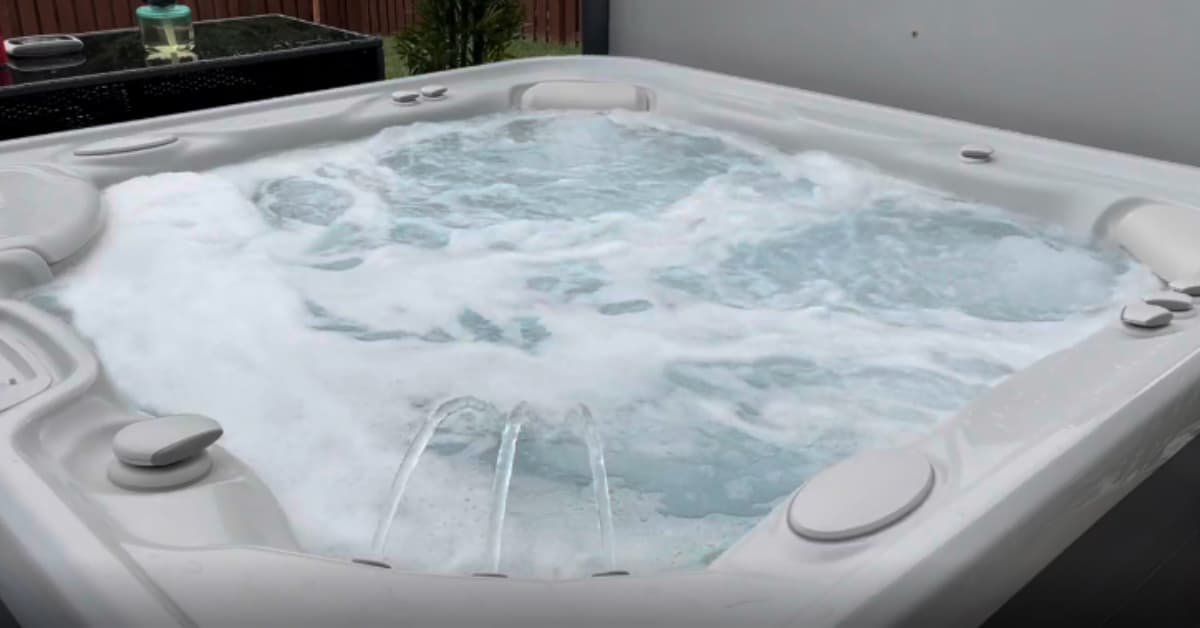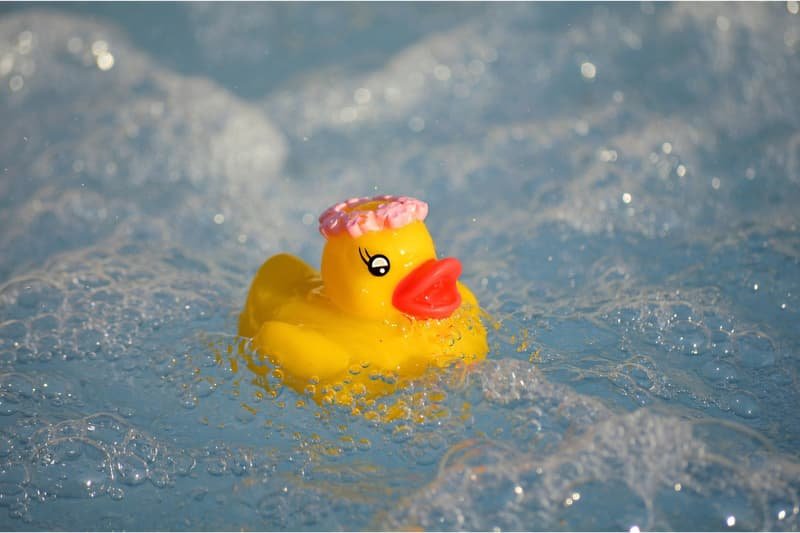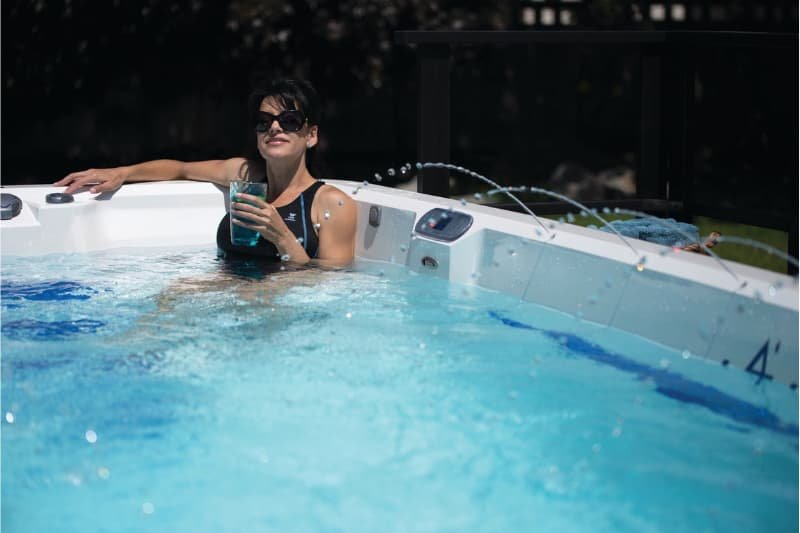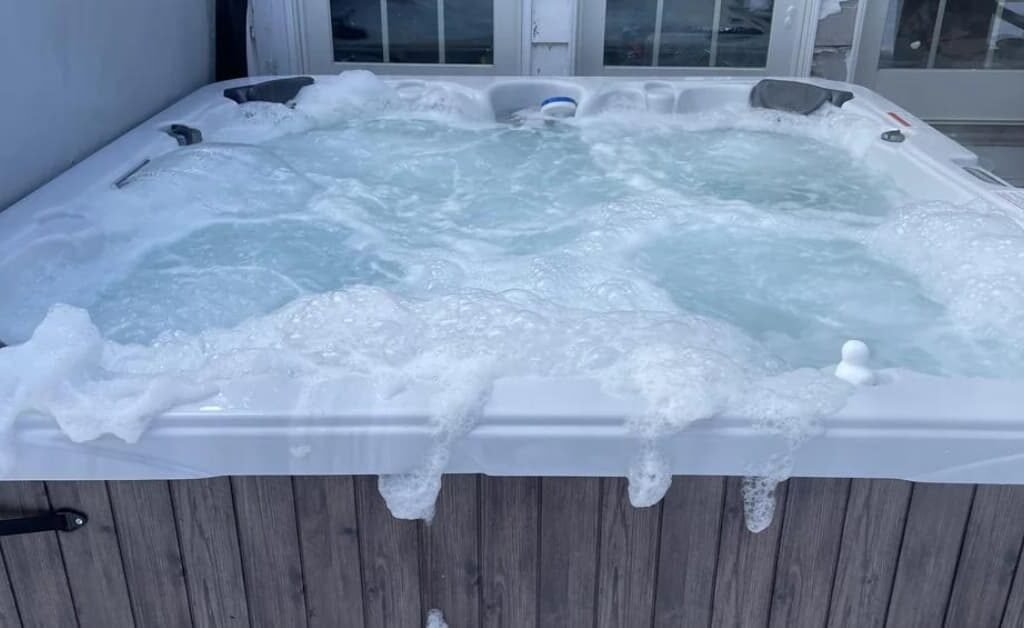
Hot tubs are a popular way to relax and unwind after a long day, but there’s nothing more frustrating than dealing with foaming hot tub water. Foaming in hot tubs can be caused by a variety of factors, from improper water balance to using the wrong chemicals.
However, with the right knowledge and preventative measures, you can easily manage and prevent foaming in your hot tub. This article will provide an overview of the causes of foaming in hot tubs, as well as preventative measures and ways to manage foaming when it does occur.
It will also discuss the importance of maintaining proper water balance and the potential effects of unbalanced water in your hot tub. By following these tips and tricks, you can enjoy a foaming-free hot tub experience and make the most out of your relaxation time.
Short Summary
- Foaming in hot tubs can be caused by improper water balance, using the wrong chemicals, low calcium levels in the water, and household products like soap, laundry detergent, and cosmetics.
- Preventative measures like showering before using the hot tub, using Chlorine Free Spa Shock weekly, and covering the hot tub can help prevent excessive foaming.
- Excessive foaming can make it difficult to relax in the hot tub and cause damage to equipment.
- Water testing and chemical balancing are crucial for the longevity of the hot tub and the safety of its users. Ideal water chemistry levels include a pH of 7.2-7.8 and a total alkalinity of 80-120 ppm. Chemicals like chlorine, bromine, silver, and copper can be used to balance water chemistry. Using water clarifiers or zorbies can reduce the need for defoamers.
Causes of Foaming

Causes of foaming in hot tubs are numerous, but two primary causes include the presence of household products and low calcium levels in the water. Household products such as soap, laundry detergent, and cosmetics can cause foaming in hot tubs. These products contain surfactants that can create suds in the water, leading to an excessive amount of foam.
Low calcium levels in the water can also contribute to foaming. Calcium is an essential mineral that helps prevent foaming, and low levels can lead to the formation of suds in the water.
Using clarifiers effectively can help prevent foaming in hot tubs. Clarifiers work by binding together small particles in the water, making them larger and easier for the filtration system to remove. This can help prevent the buildup of foam-causing particles in the water.
Additionally, it is important to understand the effects of foaming on hot tub usage. Excessive foaming can make it difficult to relax in the hot tub and may even cause damage to the equipment. Therefore, it is crucial to take steps to prevent foaming and maintain balanced water chemistry.
Preventing Foaming

Implementing preventive measures can help maintain the quality of the water in a hot tub and reduce the likelihood of unwanted reactions.
To prevent foaming in hot tubs, it is important to shower before using the hot tub to remove any personal care products or detergents that may contribute to the formation of foam. Additionally, using Chlorine Free Spa Shock weekly can help eliminate any bacteria or other contaminants that may contribute to foaming.
Covering the hot tub can also prevent debris from entering the water while opening the cover to introduce oxygen can balance the water chemistry. Using an advanced filtration system can also help maintain the water quality, as can draining and cleaning the hot tub every 3-4 months.
Testing alkalinity, pH, and sanitizer levels can help detect any imbalances in the water chemistry, which can be corrected by adding chemicals to balance pH or using water clarifiers or zorbies.
Lastly, anti-foam or defoamers can temporarily suspend foam, but adding more defoamers is not effective and can damage the equipment. Soft water can also damage the equipment, so it is important to test the hot tub water weekly and keep the water chemistry balanced to prevent foaming.
Maintaining Water Balance
Maintaining proper water balance is crucial for ensuring the longevity of a hot tub and creating a comfortable and safe environment for users.
Water testing and chemical balancing are the two primary methods to achieve the perfect water balance in a hot tub. Regularly testing the water for pH, alkalinity, and sanitizer levels is essential to ensure that the hot tub is clean and safe to use.
The ideal pH range for hot tub water is between 7.2-7.8, while the total alkalinity should be between 80-120 ppm (parts per million). The sanitizer level should be monitored regularly, and it is recommended to use a test strip or a digital tester to measure the levels accurately.
Chemical balancing is another crucial aspect of maintaining water balance in a hot tub. Chemicals such as chlorine, bromine, or minerals like silver and copper can be used to balance the water chemistry and kill bacteria.
It is essential to follow the manufacturer’s instructions while adding these chemicals to the hot tub, as too much can cause skin irritation, corrosion of the equipment, and foaming. Regularly using a clarifier or zorbie can also help maintain water clarity and reduce foaming.
By maintaining water balance and regularly testing and balancing the chemicals, hot tub owners can ensure a safe and enjoyable soaking experience.
Effects of Unbalanced Water

The quality and safety of hot tub water can be compromised by imbalanced levels of pH, alkalinity, and sanitizer. Neglecting to test and maintain water balance can result in a variety of negative consequences.
When pH levels are too high or too low, the hot tub water can become corrosive, leading to damage of the hot tub and its equipment. In addition, unbalanced alkalinity can cause skin and eye irritation, while insufficient sanitizer levels can lead to the growth of harmful bacteria.
The importance of water testing cannot be overstated. Regular testing and adjustments of pH, alkalinity, and sanitizer levels are essential to ensuring the safety and enjoyment of the hot tub. Neglecting water balance can result in foaming, a bad smell, and even a green color. Furthermore, it can lead to costly repairs and potential health risks for users.
Therefore, it is crucial to follow proper maintenance practices and seek professional assistance when necessary to maintain a healthy and enjoyable hot tub experience.
Managing Foam and Bubbles
One potential solution to address excessive bubbles and foam in a spa is to apply a small amount of anti-foam or defoamer, which can temporarily suspend the foam and allow for clearer water.
However, it is crucial to use defoamers effectively and not add more than necessary, as too much can damage the hot tub’s equipment.
Additionally, it is important to note that adding foam or bubbles to the hot tub can also cause damage, and using soft water can exacerbate the problem.
To prevent equipment damage, it is recommended to follow the instructions on the defoamer’s label and use the appropriate amount for the size of the spa.
Overuse of the defoamer can cause damage to the hot tub’s pump, filter, and heater, leading to costly repairs.
Furthermore, it is essential to regularly test the hot tub water and maintain balanced pH, alkalinity, and sanitizer levels to prevent foam and other issues.
Using water clarifiers or zorbies can also help maintain clear water and reduce the need for defoamers.
FAQs
Can hot tub jets cause foaming?
Hot tub jets alone do not cause foaming, but inadequate jet maintenance and poor water chemistry can contribute to foam accumulation. Proper jet cleaning and regular testing and balancing of water chemistry can prevent foaming.
Can using bath oils or salts cause foaming in a hot tub?
Bath oil alternatives and foam control products are potential solutions to prevent foaming in a hot tub. However, adding too much defoamer can damage equipment, and soft water can also cause issues. Testing and balancing water regularly is crucial.
How often should I clean my hot tub to prevent foaming?
Preventive measures for foaming in a hot tub include maintaining the proper chemical balance, regular cleaning, and following maintenance routines. Cleaning frequency should be every 3-4 months, along with testing alkalinity, pH, and sanitizer levels weekly.
Is it safe to use pool chemicals in a hot tub?
Using pool chemicals in a hot tub can be unsafe due to differences in chemical concentrations and pH levels. It is important to balance pH levels and ensure proper ventilation to prevent damage to equipment and potential health hazards.
Can adding too much sanitizer cause foaming in a hot tub?
Excessively high sanitizer levels in hot tub water can cause foaming. Foam prevention can be achieved by maintaining proper sanitizer levels, testing water weekly, and using defoamers or anti-foaming agents in moderation.




